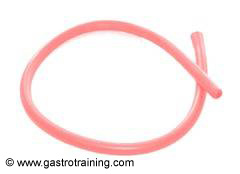Sigmoid volvulus presents with abdominal pain, distension and constipation. It is particularly common in elderly persons. Subacute volvulus is an obstruction to the passage of flatus, usually without damage to a patient’s gut or its blood supply. This can be relieved by decompression either by flatus tube or flexible sigmoidoscopy. Decompression can be successful in 50-90% of cases.
If strangulation is suspected (severe pain, toxic or peritonitic signs, or discoloured mucosa at sigmoidoscopy or flatus tube yields blood stained fluid) – immediate laparotomy is needed.
Most patients are elderly persons, and they may be treated conservatively with tube decompression per rectum. However, these patients should be carefully observed for bowel ischaemia (persistent abdominal pain and blood-stained stools), as it indicates the need for surgical intervention.
Role of surgery: Surgery is indicated, if decompression fails to alleviate the symptoms or if signs of ischaemia develop. However, volvulus tends to recur in about 60% of patients after conservative management with decompression. Surgery will be needed in recurrent cases. In surgical treatment, resection with primary anastomosis is the first choice.
Use of flatus tube
- A long, soft flatus tube is inserted with the patient in the left lateral position.
- The obstruction is usually at 15 cms.
- The flatus tube is inserted with the help of a rigid/flexible sigmoidoscope.
- The sigmoidoscope is held at the twist. The flatus tube is passed along it. With a gentle rotatory movement, the tube is eased past the twist into the high-pressure area of the dilated sigmoid.
- Successful insertion of flatus tube is rewarded by much flatus and some loose faeces. The sigmoidoscope is withdrawn, taking care to avoid displacing the tube.
- The flatus tube should be taped to the buttock to prevent its proximal migration. The flatus tube is connected to a collection bag. The flatus tube allows for rapid decompression of the distended colon, with the immediate relief of symptoms.
- The tube may be left in situ for 48 hours to allow for complete emptying of the loop and for the resolution of mural edema. The tube should not be left for more than 72 hours as it may cause pressure necrosis.








